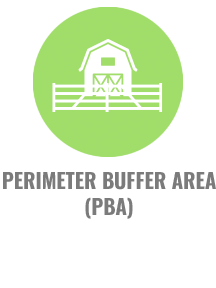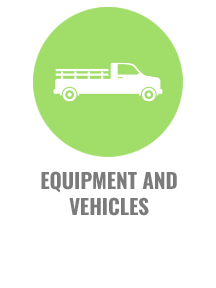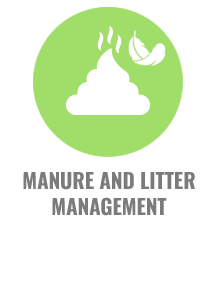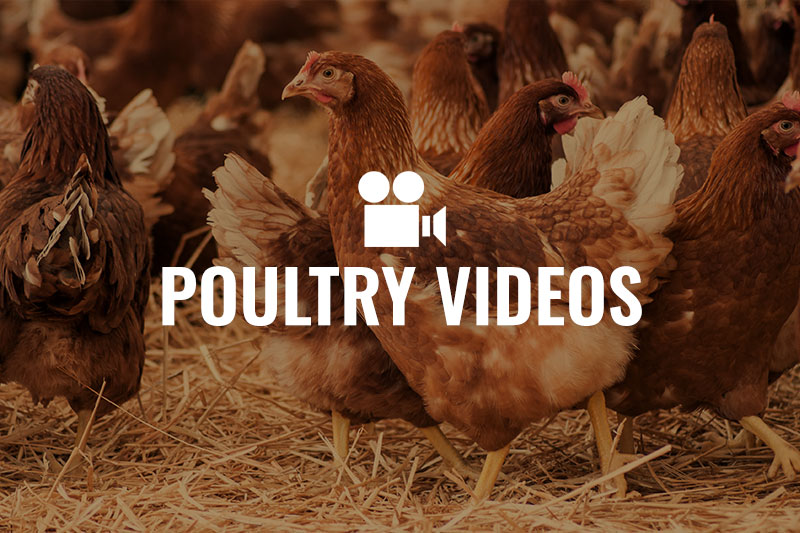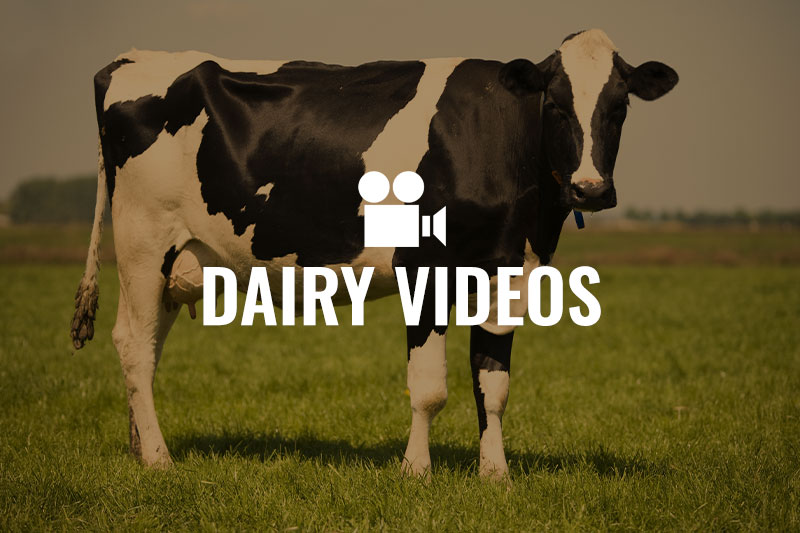Mortality & High Risk Material Disposal
Introduction
Your farm’s enhanced biosecurity plan will include a “Mortality & High-Risk Material Disposal” section. Carcasses, spoiled feed, cracked eggs and other high-risk materials attract wild birds, rodents and other vectors that can carry disease.
When writing the Mortality & High-Risk Material Disposal section of your plan you may find it useful to read examples extracted from other plans.
Click on the items below to view some potential language (written as blue text in boxes) to draw from as you develop your own daily or enhanced plan, specific for your own farm. Such example blue text is only a starting point and may not be appropriate for your farm or meet your state’s requirements.
This section will guide you through:
- Description #1
- Description #2
- Description #3
Daily Biosecurity
Requirements:
- Mortality should be collected daily, stored and disposed in a manner that does not attract wild birds, rodents, insects, and other animals, and minimizes the potential for cross-contamination from other facilities or between premises.
- It is recommended that dead bird disposal be onsite, if possible.
- Mortality disposal should be described in the site-specific biosecurity plan.
Does the premises have a mortality disposal plan during normal, daily operations?
![]() Yes
Yes
![]() No
No
Provide the procedures (SOP) for the disposal of mortality during normal, daily operations. Include any actions taken to prevent attracting wild birds, rodents/ insects, and the frequency of disposal of mortality:
High-risk materials shall include items such as, but not limited to, dead birds, escaped live birds (“jailbreakers”), unmarketable eggs, disposable equipment, sampling supplies, soiled litter, manure, and used PPE. High-risk materials will be specifically dealt with as follows:
Litter/manure: Used manure/litter is removed to a drying site that is adjacent to but outside the PBA. After drying, the manure/litter is removed by ABC Composting Enterprises to a composting site owned and operated by that company. See the manure section of this plan for more details.
Dead animals: Dead hens (daily mortality) are added to the litter/manure where it becomes part of that waste stream. The material is removed to outside the PBA, dried and then transported to a commercial composting site.
Live animals found outside cages: Poultry that escape containment present a disease risk, as they may commingle with the unmonitored avian population. Escaped birds are euthanized by cervical dislocation, in a manner identical to daily mortalities, added to the litter/manure storage. Escaped birds are never returned to the birdhouse.
Animal Products (eggs and egg spillage): Spoiled, broken, and unusable eggs are collected in plastic buckets at the farm packing facility. This material is managed the same way as daily mortalities, by adding to manure/used litter and then removal to the drying site and ultimately pick up by our contracted composting company.
Spent Hens: Live spent hens are euthanized on the farm using kill carts and CO2 gas. The carcasses are removed to the drying site outside the PBA. There the carcasses are picked up by ABC Rendering. Pick-up of these carcasses is prearranged with the rendering company (or their certified dead hauler) so that carcass piles are removed immediately.
Disposable equipment, sampling supplies, and used PPE:
- Used disposable PPE are discarded into lined, lidded plastic trash bins located at perimeter access points/internal LOS access points.
- Disposable equipment and sampling supplies will be discarded into lined, lidded plastic trash bins located away from animal housing areas.
- Disposal containers do not leave the premises.
- All waste materials are sealed in the liner bags prior to placement in the garbage dumpster. The trash dumpster is located outside the perimeter. (See biosecurity map.)
- Recology Inc. is contracted for twice-a-week pick up of waste from the farm for transport to the county landfill.
The premises has the ability to store disposed items for a minimum of 72 hours in the case of movement delays and can store high-risk materials (not including dead animals) for an indefinite number of days.
Provide the procedures (SOP) for the disposal of mortality during normal, daily operations that prevents and minimizes the potential for cross-contamination from other facilities or between premises.
See above.
Enhanced Biosecurity
A disposal plan includes the details of how high-risk materials (e.g. dead animals; animal products; live animals found outside cages; disposable equipment supplies, and PPE; and waste materials) will be disposed of and/or removed from your premises to prevent the spread of disease during an animal disease outbreak.
Disposal Plan Requirements:
- In the event of an animal disease outbreak that requires activation of your Enhanced Biosecurity Plan, additional biosecurity measures for the disposal of high-risk materials may be required. The IMT may specify additional disposal requirements for high or at-risk premises.
- If the premises needs to move litter/manure to comply with municipal ordinance contact IMT as soon as possible to request movement permit.
Provide the procedures (SOP) for disposal of DEAD ANIMALS during Enhanced Biosecurity Plan activation:
During activation of the farm’s Enhanced Biosecurity Plan, disposal of used litter/manure, daily mortality, spent hen carcasses and unsaleable egg material fundamentally changes.
- Transport of used litter/manure from the drying area to off-site composting by ABC Composting Enterprises will be discontinued until authorization to resume is provided by the IMT.
- Transportation of spent hen carcasses to ABC Rendering will be discontinued until authorization to resume is provided by the IMT.
Instead, during activation of the farm’s enhanced biosecurity plan, the used litter/manure will be mixed with daily mortality, gas-euthanized spent hen carcasses and unsaleable egg material. This mixture will be managed as compost piles in what was previously the drying area, and will now exist as the farm’s litter/mortality composting site.
Any farm-specific vehicles used to deliver manure/litter, daily mortalities, spent hen carcasses or egg material to the drying site will not permitted to cross the perimeter and return to the PBA until having completed Cleaning and Disinfection. This will be performed at the farm’s sole C&D station, located at the front gate (see the farm’s biosecurity map).
Provide the enhanced biosecurity procedures (SOP) for disposal of ANIMAL PRODUCTS (eggs and egg spillage) during Enhanced Biosecurity Plan activation:
See above
Provide the enhanced biosecurity procedures (SOP) for disposal of LIVE ANIMALS found outside of cages during Enhanced Biosecurity Plan activation:
See above. Live animals are humanely euthanized and put into the on-farm composting waste stream. Escaped birds are never returned to the birdhouse.
Provide the enhanced biosecurity procedures (SOP) for disposal of DISPOSABLE EQUIPMENT AND SAMPLING SUPPLIES during Enhanced Biosecurity Plan activation:
See Daily Biosecurity section. No change occurs. Disposable equipment & PPE and sampling supplies are collected into lined, lidded plastic trash bins located away from animal housing areas. Disposal containers do not leave the premises. All waste materials are sealed in the liner bags prior to placement in the garbage dumpster. The trash dumpster is located outside the perimeter and bags will be thrown over the fence into the dumpster. (See biosecurity map.)
Provide the enhanced biosecurity procedures (SOP) for disposal of WASTE MATERIALS during Enhanced Biosecurity Plan activation:
See Daily Biosecurity section. No change occurs.
Does your premises have the capability to store high risk materials for at least 72 hours in case of movement delays?
![]() Yes
Yes
![]() No
No
Specify the number of days for each of the following:
- Storage of high-risk materials (not including dead animals or manure): 3 days in dumpsters
- Storage of dead animals: 10 months within on-site compost piles
- Litter/manure must be moved within: 10 months as on-site compost piles
Are employees trained on enhanced biosecurity procedures for disposal of high-risk materials?
![]() Yes
Yes
![]() No
No
Training Materials Goes Here!
Mortality & High-Risk Material Disposal
Mortality are the dead animals. Disposing of mortality daily is important for biosecurity so as not to attract wild birds, rodents, insects, and other animals. Monitoring the mortality rate (number of dead animals in a given time period) is a critical part of flock health monitoring.
High Risk Materials refers to materials that present a risk for spreading disease agents such as dead animals; animal products; live animals found outside cages; disposable equipment supplies, PPE; and waste materials. High risk materials require additional measures (e.g. bagging and tying) prior to disposal.
Waste Materials refers to materials that are low risk for disease spread including trash, packing supplies, etc. Waste materials are typically disposed of directly into a trash or garbage bin.




